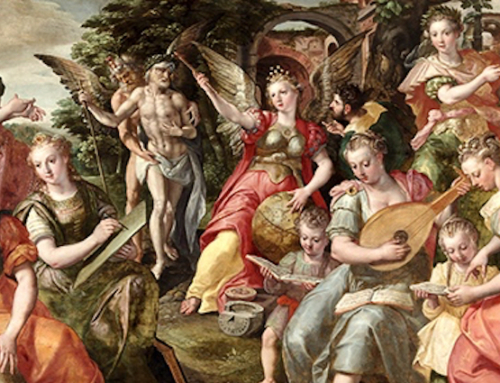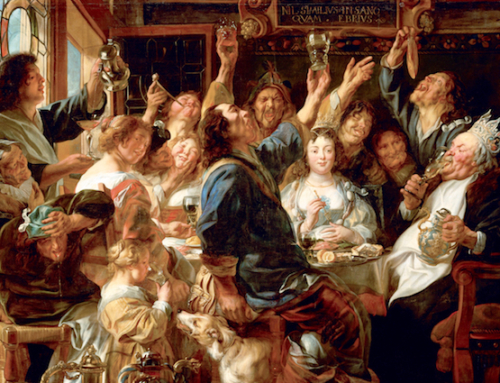Strange as it may seem, there are profound analogies between composer Richard Wagner’s creative vision and our evolving thinking around brands…
 Few characters in modern history are as controversial and divisive as German composer Richard Wagner. Many of his political writings and personal views are rightly considered an indelible and embarrassing stain, forcing virtually all critics to draw a clear distinction between the man and the composer. And even when considering only the latter, his creative work counts both fervent devotees and equally vehement detractors.
Few characters in modern history are as controversial and divisive as German composer Richard Wagner. Many of his political writings and personal views are rightly considered an indelible and embarrassing stain, forcing virtually all critics to draw a clear distinction between the man and the composer. And even when considering only the latter, his creative work counts both fervent devotees and equally vehement detractors.
There is one point, however, which finds everyone in agreement, and it is Wagner’s unparalleled influence on the history of music and on the wider world of the performing arts. Whether one loves or loathes Wagner’s work, its significance cannot be overstated. Perhaps a simplistic indicator of this is the fact that the adjective “Wagnerian” has transcended the musical vocabulary, and now describes something grandiose and extraordinarily ambitious. There is no equivalent example; independent of the greatness of these composers, expressions such as “Beethovenian” or “Mozartian” have never crossed the borders of music.
Literally hundreds of books have been written about Wagner’s revolutionary, sweeping music; to the extent, for instance, that some of those books focus on a single chord, known as the “Tristan” chord (the four-note combination which introduces the musical drama Tristan und Isolde), which many take as signaling the birth of modern music. To Wagner, however, fundamental as it was, music was an ingredient, which blended with the narrative, the lyrics, the scenography, and the actual staging—all of which he had full authorship of.
He created the stories, such as Parsifal’s reinterpretation of the legend of the Holy Grail. He imagined the characters, inspired by ancient tales, such as the Nibelungs and the Valkyries in the colossal Ring cycle. He accompanied his scores and librettos with prescriptive visual references. And when he had the opportunity to oversee the construction of his own theatre in Bayreuth, Germany, he developed a concept (as we would call it today) combining a number of innovations which now seem obvious: the dimming of the lights in the theatre; the use of stage and lighting effects; and the disappearance of the orchestra from the audience’s view. These three simple, but hugely effective, design choices ensured the audience’s deep engagement. In essence, one could argue that Wagner invented cinema before the technology existed.
All of this shows that Wagner did not conceive his works merely as musical performances or operas. Rather, he was effectively masterminding monumental immersive experiences—and he was doing it to convey precise messages to his contemporaries, be it the creation of a shared Germanic culture through the reinvention of a mythical past, or to expose the dominance of man’s desire over rationality, years before Freud’s work.
Ultimately, Wagner believed in the power of experience to change the way people thought. He spelled it out in one of his best-known quotations: “Imagination shapes reality.”
Concept. Design. Experiences. Messages.
Strange as it may seem, there are profound analogies between Wagner’s creative vision and our evolving thinking around brands.
Today, creating compelling experiences is the chief way in which brands can credibly express their raison d’être, as well as what differentiates them. Organizations wanting to extract immense, even disproportionate, value from their brands must, like Wagner, work as polymaths; they must be great storytellers, impeccable orchestrators, innovative designers, consummate engineers, as well as uncompromising perfectionists.
They must (like Wagner) own a single sense of purpose (the message) and bring it alive through emotionally intense content (the music and the drama) and the effectiveness of touchpoints (the staging). Most importantly, they must weave all this into a seamless, cohesive texture.
But how can that be achieved in our fragmented world, where the stage is at once nowhere specifically, and potentially everywhere? Where the audience is not sitting in a theater for hours, but is connecting on demand for minutes? Where each spectator is an active, and sometimes influential, critic?
The answer is, interestingly, in one of the musical tools that Wagner became most famous for.
In order to help us perceive a character’s feelings or motivations, Wagner needed tools at his fingertips. One such technique is his use of fragments of melody, rhythm, or harmony as calling cards of a character, a place, an idea, an object, or a memory. These musical cells, from which he created the whole web of the music, he called leitmotiv. At its simplest, leitmotiv is a straightforward association of a nugget of tune with a character. Every time the character appears or is mentioned or thought of by someone else, we hear that nugget. In the Ring, every character has his or her own leitmotiv, or signature tune. Other motifs in the story are attached to concepts, such as “spear,” the “gold,” or the “River Rhine.” There are in fact hundreds of leitmotivs in the Ring. They became a vast tapestry on which the music and the story hang.*
It is inspiring to think of this as the brand leitmotiv: a signature concept that the brand owns, and that can be brought to life through a variety of expressions while always being instinctively associated with the brand. Just like in Wagner’s music, the leitmotiv is sometimes hard to distinguish; however, it is always effective in evoking the brand. It’s almost never explicit, but you know when it’s there—you just feel it. And it brings the entire brand experience magically together, giving the brand the status of a ubiquitous, indispensable presence.
A brand’s leitmotiv is not, for instance, a visual, verbal, or aural element; these are, rather, codes. The leitmotiv is the overall, unifying theme and concept that those codes should help express.
This reflects the fact that the days in which a brand could manifest itself through elements of a visual identity are gone. In a multidimensional world, brands must be able to manifest themselves through a far broader and nuanced spectrum of means. Developing a brand leitmotiv is a way of owning a relevant, wider concept that creates salience for the brand. It is also a way of superseding the increasing limitations of traditional intellectual property and creating an association which, if successfully consolidated, results in uniquely strong differentiation—the kind that provides stronger protection than any trade mark could ever guarantee.
Think of Burberry, a brand that has driven impressive business growth by creating a coherent and compelling experience across a wonderfully diverse set of existing and newly created touchpoints. What makes the Burberry experience particularly effective is its omnipresent leitmotiv, Britishness. Whether it’s the choice of British testimonials or the falling leaves in a pictorial, or even the use of materials and furniture in its Regent Street store, Britishness is what consistently underscores this brand’s presence. Or even its absence, in fact: introduce Britishness as a theme, and, by now, Burberry will be a very likely association.
In retrospect, the turning point for this brand was the shift from owning merely a code—the once over-exposed check pattern—to owning a leitmotiv (a much more flexible, engaging, and purposeful property).
For a brand like Prada, the leitmotiv could possibly be defined as being avant-garde. This echoes through the maison’s bold, provocative product design, the adventurous architecture of its flagship Epicenter stores; it vibrates across the brand’s selective artist collaborations, its landmark Fondazione Prada in Milan, and its involvement in the Venice Biennale. Prada’s leitmotiv is implicit, but it can be felt across every single public act of this brand. As a result, it brings everything beautifully together, giving the brand a salience that goes beyond its industry. This also provides the brand with a strong edge: When you think about it, Prada is very similar (in terms of its Tuscan origin, products, touchpoints, and business model) to the likes of Gucci and Ferragamo. Yet, Prada’s brand leitmotiv allows it to conceive and design an experience that creates, all other things equal, deep differentiation.
These examples show the power of the leitmotiv in providing these brands with a “gravitational field” that expands far beyond the reach of their products as such.
To this end, a brand leitmotiv is rooted in, but radically distinct from, constructs such as a purpose, a positioning, or a proposition. While these concepts, in various ways, represent what the brand stands for, the leitmotiv is what will stand for the brand.
The leitmotiv translates a brand’s competitive position into a compelling, universal concept which can be successfully sublimated into a meaningful, narrative experience; an aura that is indispensable in igniting demand and desire in today’s fragmented world.
Books on the topic of this essay may be found in The Imaginative Conservative Bookstore. Republished with gracious permission from the Future Symphony Institute (March 2017).
* Howard Goodall, The Story of Music. The historical and musical context reported in this essay owes much to this book.







Leave A Comment